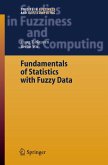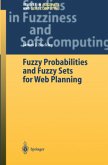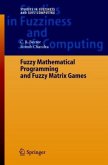sections dealing with fuzzy functions and fuzzy random functions are certain to be of special interest. The reader is expected to be in command of the knowledge gained in a basic university mathematics course, with the inclusion of stochastic elements. A specification of uncertainty in any particular case is often difficult. For this reason Chaps. 3 and 4 are devoted solely to this problem. The derivation of fuzzy variables for representing informal and lexical uncertainty reflects the subjective assessment of objective conditions in the form of a membership function. Techniques for modeling fuzzy random variables are presented for data that simultaneously exhibit stochastic and nonstochastic properties. The application of fuzzy randomness is demonstrated in three fields of civil engineering and computational mechanics: structural analysis, safety assessment, and design. The methods of fuzzy structural analysis and fuzzy probabilistic structural analysis developed in Chap. 5 are applicable without restriction to arbitrary geometrically and physically nonlinear problems. The most important forms of the latter are the Fuzzy Finite Element Method (FFEM) and the Fuzzy Stochastic Finite Element Method (FSFEM).
From the reviews: "The subject of the book is the comprehensive consideration of uncertainty in the numerical analysis, the safety assessment, and the design of structures. ... The book in particular is addressed to civil engineers ... . But also for mechanical engineers ... the book represents a suitable introduction to the problem of uncertainty modeling ... . can be instrumental in broadening the interests and background of those who turn to it. The book demonstrates how one goes about taking account of uncertainty modeling and uncertainty models." (Current Engineering Practice - online, Vol. 47, 2004/2005) "The book deals with a new and important subject of mathematical modeling in engineering, i.e. uncertainty models in civil engineering. It contains seven chapters and an extensive reference list. This work is recommended to engineers and scientists in the area of civil engineering, fuzzy analysis and the corresponding numerical methods." (Olivian Simionescu, Zentralblatt MATH, Vol. 1080, 2006) "To my best knowledge, this is the first book that covers fuzzy randomness in a comprehensive way. The motivation of the authors to study fuzzy randomness was to deal with some difficult problems in the field of civil engineering and computational mechanics in a more realistic fashion. ... this is an important book. I have no doubt that it will stimulate the use of fuzzy randomness not only in civil engineering and computational mechanics, but in other areas as well." (George J. Klir, International Journal of General Systems, Vol. 34 (3), 2005)









